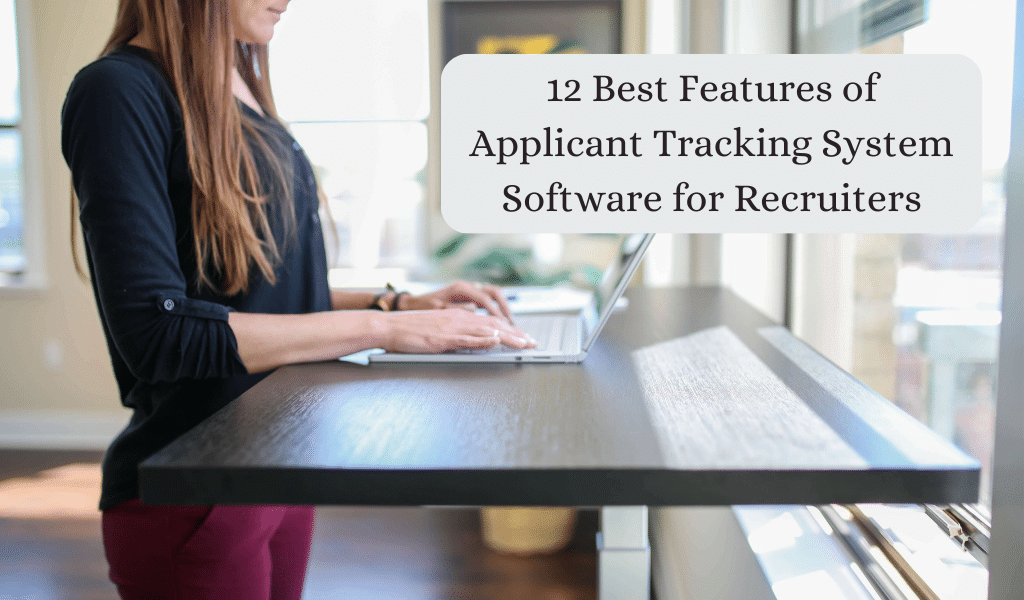Busy recruiters need an easy way to keep up with applicants and listings. Applicant tracking system software with these features will help.
Applicant tracking system software is nothing new to the recruiting industry. With online job listings like LinkedIn, Indeed, Glassdoor, and others, it’s not unusual to get hundreds of applications for every job listing. There’s simply no efficient way to keep up with that kind of volume without help.
At the same time, each recruiting situation is somewhat unique. Some recruiters are multi-tasking HR professionals. Larger companies have entire teams devoted to recruiting. Then there are agencies that specialize in recruiting for companies. Some of those are dedicated to specific industries, while others engage in wide-ranging searches for numerous clients in any field imaginable.
Even with these differences, though, there are still some common needs when it comes to applicant tracking system software. Features such as a user-friendly interface, customizable workflows, and pricing transparency are vital. But with approximately a billion (give or take) options, what features do you really need? Here’s our list.
Make more calls, keep up with your prospects, track your call statistics, and much more with Call Logic. Schedule a free demo today to see what you’ve been missing!
The 12 indispensable features your applicant tracking system software needs
1. Excellent customer service. If you’ve read any of our “best features” articles about software, you know that excellent customer service always makes the list. You will undoubtedly have questions, need troubleshooting advice, need to reset your password, run into tech issues, or something. Even the best, most user-friendly software will leave you scratching your head once or twice. When that happens, you need to be able to reach someone to get help.
2. Onboarding system. Any time you implement new software, there’s a learning curve. You may need to transfer loads of information or active applicants. Whether it’s an in person or online session, or a series of helpful videos, ensure the applicant tracking system software you invest in has some type of customer onboarding system.
3. Free trial or demo. Because software can be so different from one provider to the next, it’s helpful if there is a demo or free trial available. That can give you a lot of information about how easy (or not) the software is to implement and use. And though there’s still a learning curve, you can at least get a general idea of whether or not the system is right for you. This is also a good opportunity to check out the type of customer service you’ll get with a company.
4. Scalability. Especially in a growing company, you want applicant tracking system software that can scale with you. This may require a different subscription level or upgrade, however, that’s to be expected. The real question here is whether the software is flexible enough to meet your needs as you grow.
5. Automated applicant updates. As a job applicant, it’s nice to know where your application stands in the hiring process. It’s easy to feel like you’ve thrown your resume into a black hole. Automated updates, however, help the candidate, since they get notified when an application is received and reviewed.
6. Filtering. With the possibility of hundreds of candidates for each job listing, filtering is an essential element of any applicant tracking system software you use. That way, you can eliminate unqualified candidates before you spend the time going through resumes.
7. Mobile capabilities. Not every recruiter will need mobile capabilities, but if you’re frequently on the go, this could be an essential feature.
8. System security. Your reputation is on the line, not to mention the private details of your candidates and inside company information. Don’t overlook system security features in your search for applicant tracking system software.
9. Automated listings. SimplyHired, Indeed, ZipRecruiter, Handshake, Monster, Glassdoor, CareerBuilder, Idealist, and the list goes on. You could spend a LOT of time posting your openings to the many job listing sites that applicants may search. Or you could invest in software that automates this process and saves you hours for each hiring opportunity you have.
10. User-friendly. Yes, the software should be user-friendly for you. It should also be easy, streamlined, and intuitive for your applicants. People don’t want to re-enter the information already on their resume. They don’t want to repeat their email address on every page. Remember, this is one of the first impressions of your company that your applicant gets. A simple, quick process looks good for you, and it will help you move more qualified talent into your system.
11. Customization. From reporting to analytics to dashboards to candidate questions to workflows, ensure your software is customizable enough to give you what you need.
12. Easy integration. Recruiting isn’t just about gathering resumes. You need to schedule interviews and share documents, among other things. Software that integrates into your other systems will streamline your work and make it easier.
Recruiting doesn’t need to be challenging. Ensure your software has these features and you’ll be on the road to easy recruiting and hiring!
Find more success with Call Logic. From call notes to built-in compliance, we’ve got you covered in every aspect of your recruiting business. Call for your free consultation today to learn more!

